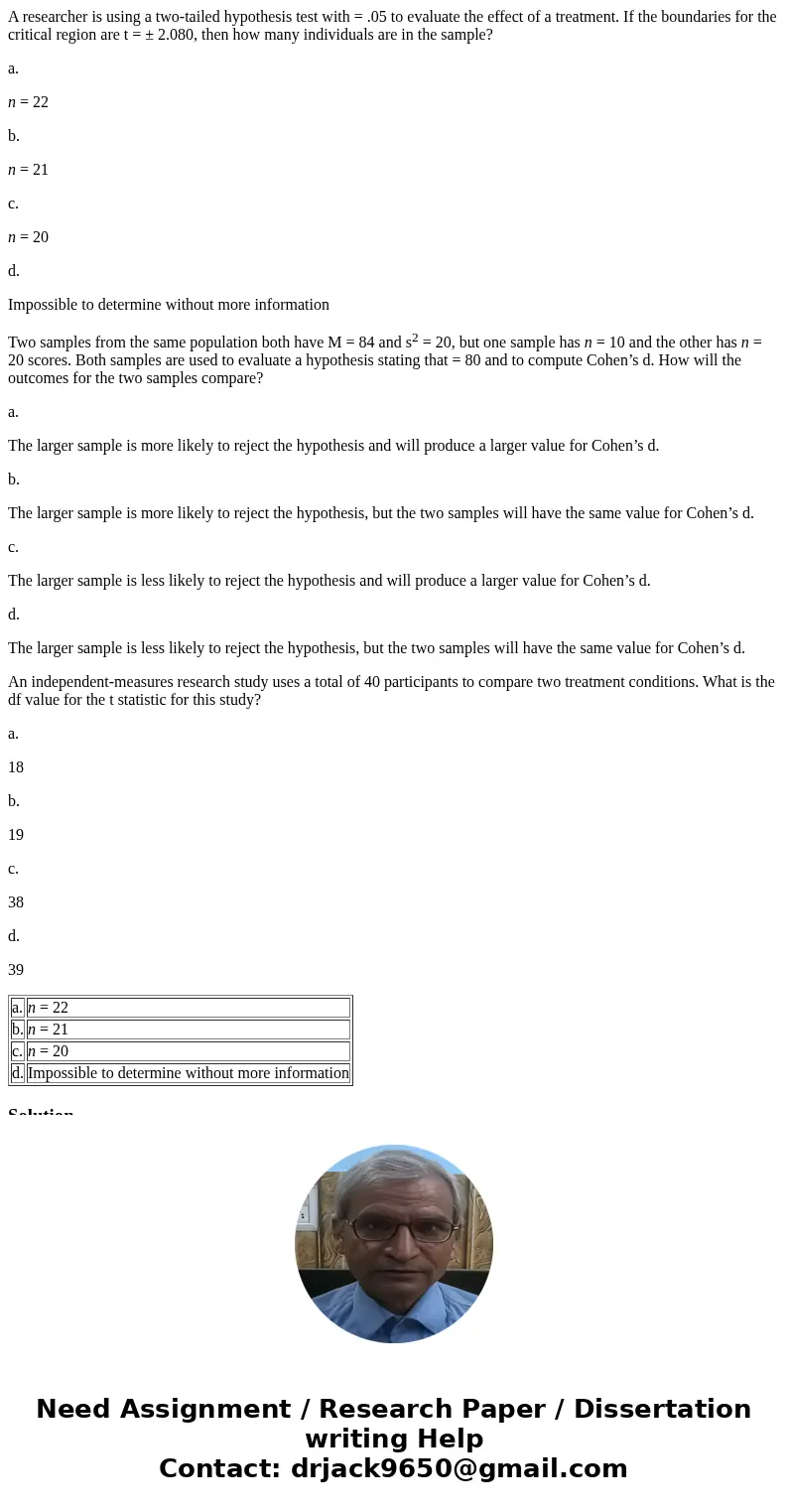A researcher is using a twotailed hypothesis test with 05 t
A researcher is using a two-tailed hypothesis test with = .05 to evaluate the effect of a treatment. If the boundaries for the critical region are t = ± 2.080, then how many individuals are in the sample?
a.
n = 22
b.
n = 21
c.
n = 20
d.
Impossible to determine without more information
Two samples from the same population both have M = 84 and s2 = 20, but one sample has n = 10 and the other has n = 20 scores. Both samples are used to evaluate a hypothesis stating that = 80 and to compute Cohen’s d. How will the outcomes for the two samples compare?
a.
The larger sample is more likely to reject the hypothesis and will produce a larger value for Cohen’s d.
b.
The larger sample is more likely to reject the hypothesis, but the two samples will have the same value for Cohen’s d.
c.
The larger sample is less likely to reject the hypothesis and will produce a larger value for Cohen’s d.
d.
The larger sample is less likely to reject the hypothesis, but the two samples will have the same value for Cohen’s d.
An independent-measures research study uses a total of 40 participants to compare two treatment conditions. What is the df value for the t statistic for this study?
a.
18
b.
19
c.
38
d.
39
| a. | n = 22 |
| b. | n = 21 |
| c. | n = 20 |
| d. | Impossible to determine without more information |
Solution
1.
Using a table, the critical value for t is closest to 2.080 when it is n = 22. [or, df = n - 1 = 21] [OPTION A, ANSWER]
Hi! Please submit the next questions as a separate question, so that we may continue helping you. Thank you!


 Homework Sourse
Homework Sourse